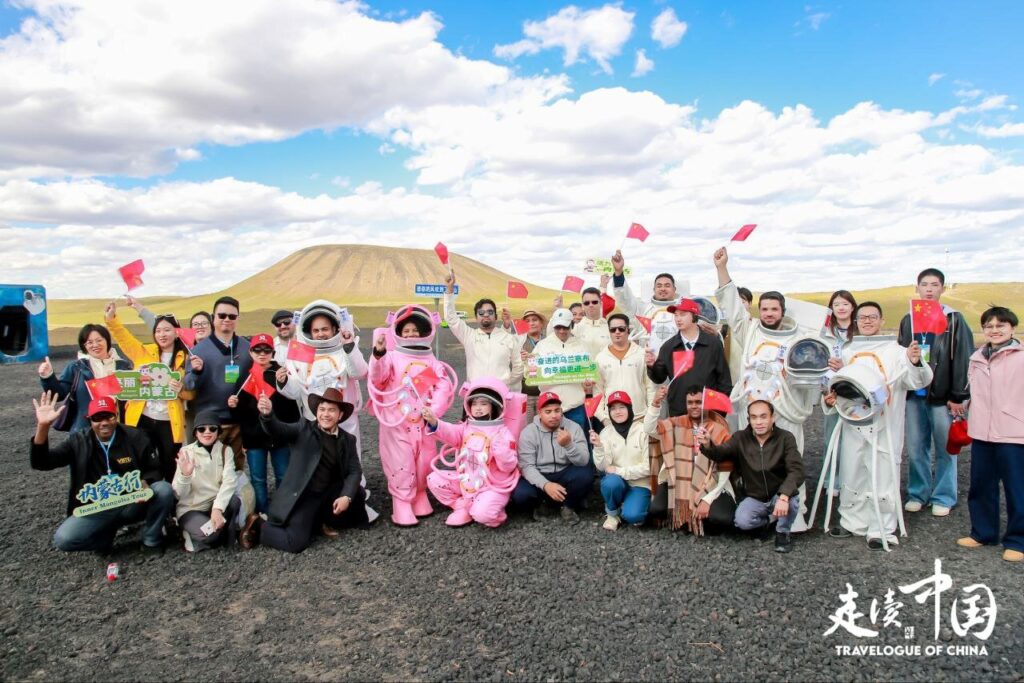Urangab – As one of more than 20 international journalists visiting Inner Mongolia, I have witnessed something incredible. The harmony of social coexistence here is not just an idea, it is a living truth. China’s promises of a shared future are not about the sky. In this magnificent region, that ideal unfolds right in front of you.
This revelation came on a Wednesday afternoon when I visited the volcanic clusters of Ulanhad. There, the harsh beauty of ancient geological layers tells the story of the raw power of nature. The volcanic cone rises dramatically from the plains and is a dark rocky surface that witnesses an eruption that occurred more than 20,000 years ago.
Locals welcomed us with the traditional Mongolian songs of the Tourist Centre. Their voices echo through this otherworldly landscape, creating a bridge between the past and present.
We explored volcanic craters that are surprisingly lively with hardy plants adapted to harsh conditions. The highlight came when he changed groups to this alien-looking terrain team of space explorers wearing astronaut suits.
Laughter broke the language barrier as we posed among the volcanic rocks. Their strange layers resemble sculptures engraved in the hands of nature.
After our exploration, the local family provided us with a simple but delicious meal. Roasted potatoes cooked in volcanic soil and abundant milk tea. Their hospitality transforms basic ingredients into memorable feasts and shows how Mongolian culture transforms needs into art.
What makes Inner Mongolia extraordinary is not just its dramatic landscape, but also the way the community has found ways to thrive in harmony with this challenging environment. The villagers developed sustainable tourism that shared their volcanic heritage with visitors, while maintaining their integrity. Young entrepreneurs are creating businesses that honor traditional knowledge while embracing new opportunities.
People here find ways to advance without conquering nature and welcome change without losing their identity.
This journey through the volcanic centres of Inna Mongolia revealed more than geological wonders. It showed how respect and innovation can produce prosperity that benefits both people and the land. In a world looking for sustainable models, places like this offer valuable lessons.
As an Iranian journalist, I believe that the core values of Chinese culture (connection, mutual trust, harmony, progress) hinder the principles necessary to foster a unified future for humanity. We are equally convinced that Chinese cultural wisdom will help us guide the world into a more just and international system. It is rooted in cooperation, shared rules, and true multilateralism where all countries flourish.
The visit to the Volcanic Cluster was part of the “Chinese Travelogue” programme hosted by the China Public Diplomacy Association and Global Times Online. Volcanic cluster exploration marked an exciting midpoint in a five-day Inner Mongolian adventure. Our journey began on Monday and took a train from Beijing to Hohot. Then on a Tuesday evening we took a bus to Urancab.

